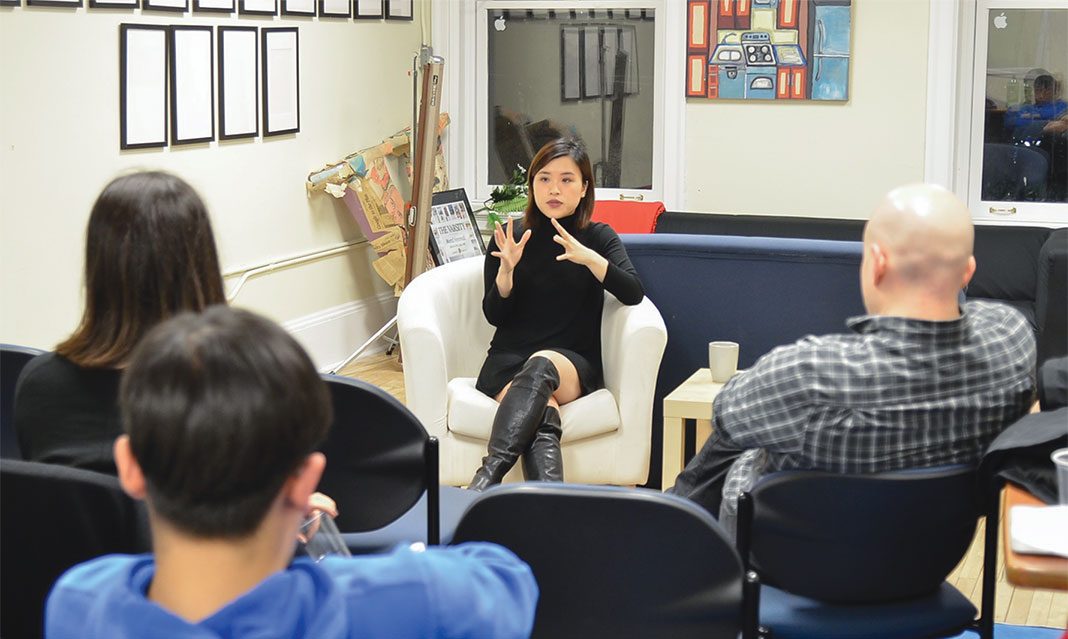The media is largely “white.” Instances, such as this year’s #OscarsSoWhite backlash, and the news of Trump’s win gaining the presence of alt-right groups in both Canada and the U.S., leads one to question the dismal representation of people of colour in the media.
Anita Li, a U of T alumna and currently a senior editor at Fusion, spoke at The Varsity’s office at the St. George campus regarding diversity in Canadian media. Li has 15 years of experience in print, broadcast, and digital media. Her talk not only focused on the representation of minorities in old media versus new media, but also the quality of such representation. How and why are minorities portrayed differently in old and new media?
Old media (such as newspapers and broadcast) and new media (including examples such as digital news, Fusion, and Mashable) are often pitted against each other, even though they are both merging. Generally, we consider “old media” more “objective” than new media, because it relies less on social media and clicks. However, due to the overwhelming presence of old white males in the upper ranks of old media news outlets, there is still a bias present. The news that gets published and distributed to the audience is filtered through their lens. Even before the story is pitched, the reporter or editor gets to decide which angle to report the story from.
According to Li, often, Canadian news discussions and reports on race are one-dimensional and pander to the white male gaze.
Li worked as a reporter for the GTA section at the Toronto Star and found that her pitches, which centered on people of colour, were repeatedly rebuffed by her editors for other nonsensical pitches, such as a story about cats. Interns and journalists, who are also POC, are forced to pander to this old white male power to get published.
With the massive layoffs at the Toronto Star this past summer, and the rising popularity of receiving news from the internet, the future of old media looks weak.
Enter new media—it’s young, progressive, fresh, and boasts a more diverse news staff. If you have received news from any website like BuzzFeed, Mashable, Gawker, or Business Insider, then you are an audience member of new media. New media websites rely on web traffic and are less reliant on traditional means of revenue, such as money from investors. This reliance on web traffic, combined with a younger workforce, translates into more risk-taking. New media reporters do newer things to get more web traffic. Polarized and sensationalized news articles on these websites are the most lucrative, because they get more hits.
Due to this risky attitude and diverse workforce, the new media is more likely to dive into issues affecting POC—something that the old media neglects.
When Li worked for Mashable in 2014, her article on an African-American-owned crowdfunding website helped other African-American businesses receive over 3,300 shares. Had she pitched this to old white male editors over at the Star, Li believes that it wouldn’t have been compelling enough to get published.
Even monumental events affecting the African-American community, such as the shooting of 17-year old boy Trayvon Martin in 2012, barely received any coverage on old media. Instead, the online press and discussion on social media kept Martin’s name in the news.
So, is new media just better at representing minorities than old media? During her talk, Li suggested that in some ways, old media is superior to new media.
Journalists in old media outlets are held to a higher standard of editing, fact-checking, and sourcing. Old media outlets put their journalists out on the frontlines of reporting, as journalists go directly to the scene to get the story. Old media also has more legal protection—they have advisors to guide their publishing and prevent any libel lawsuits. In contrast, new media expect their journalists to take up multiple jobs, including but not limited to: photography, video editing, and data journalism. According to Li, an ideal platform would combine the editorial rigour of old media with the progressivism of new media.
New media is experiencing rapid growth due to the intense technological change. Virtual reality journalism is a journalistic experience that forces the audience to enter a war-torn area, a protest at a square, or a refugee camp, by using a VR headset. Instead of reading about the subject in a news article, you can walk in the subject’s shoes. Li remarked on how this new augmented reality journalism can be a trailblazer for social justice journalism and help the viewer to easily empathize with the cause.
Point of views and objectivity play a big part in how minorities get portrayed in the media. In old media, the POV is constructed through the lens of an old white male. In new media, a more diverse workforce ensures more representation for people of colour, but only if it gets the clicks, likes, and shares.
According to a study in 2004, the most recent study of its kind in Canada, only 12.3 percent of anchors and 8.7 percent of reporters and interviewers were visible minorities. In 2010, CBC Radio Canada reported that their reporter staff is composed of only eight percent of minorities.
The next time you see a promotional campaign for Canada’s multiculturalism, remember that we’ve still got work to do.



